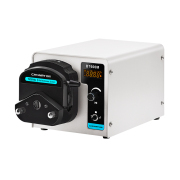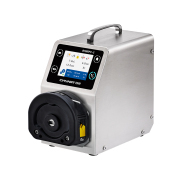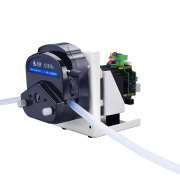Chonry Peristaltic Pump
Peristaltic Pump
Peristaltic Dosing Pump
A peristaltic dosing pump is a convenient and safe way to dose fluids. Its IP65 rating makes it resistant to water and chemical spills. Its premium-grade tubing provides exceptional chemical compatibility and long-term use. Other tubing materials can be used for aggressive liquids. For more information about peristaltic dosing pumps, read this article. Also, consider purchasing a peristaltic dosing pump for your medical practice.
A peristaltic dosing pump offers a variety of features to meet the specific needs of your laboratory or production facility. Peristaltically-driven pumps have wide chemical compatibility, which makes them ideal for chemical dosing. The amount of squeeze the pump exerts on the tubing also influences pumping performance and tube life. A lesser squeeze may cause the pumped medium to slip back and may lead to premature hose failure.
The inside diameter of the tube is not a critical design parameter. The outside diameter is not critical; it may be of various IDs. The larger the ID, the higher the flow rate. Since flow rate is proportional to cross-section area of the tube bore, a larger ID will provide more fluid flow. This makes the choice of ID based on the application more challenging than it is for other types of pumps.
A peristaltic dosing pump is a useful and cost-effective addition to any lab's collection system. They can be retrofitted to any wiped-film evaporator. It is a versatile piece of equipment that transports fluid seamlessly and eliminates the need to break vacuum in order to refill feed flasks. A peristaltic pump consists of a tube that is inserted between the manifold and the rotor. The rollers are made to squeeze the tubing between the two. The pump may run continuously, or may index the fluid through partial revolutions.
Another important aspect of a peristaltic dosing pump is the material of the hose. The hose can be made of silicone or thermoplastic vulcanizate (TPV) material. The hose can be made from PVC or silicone, which are both non-aggressive materials. However, the hose itself can be made from various chemically-compatible materials. The most common chemical resistant peristaltic dosing pumps include TPV, but these materials are not inherently chemical-resistant.
A peristaltic dosing pump is an oscillating positive displacement pump that adds liquids into a process. It is powered by an air actuator or electric motor. It features a controller that turns the pump on and off and controls the flow rate. Some of these pumps are equipped with sophisticated control systems to ensure proper chemical concentrations and prevent chemical spills. In addition, they are designed for high-pressure and high temperature conditions.
Other benefits of a peristaltic pump include its easy-cleaning design. The pump does not have any seals or valves and can even inject into a vacuum. However, it is important to check for leaks and other potential problems with the pump before purchasing one. The pumps available from Global Pumps include peristaltic hose pumps, air operated diaphragm pumps, and peristaltic hose pumps.
0users like this.







